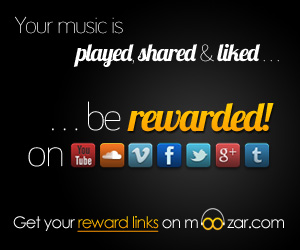by Dave Mainella
Earlier this week, music data analytics company Next Big Sound released their 2012 State of Online Music report. After tracking data related to the growth of social networks, streaming services, online radio, and digital downloads for nearly three years, we have a by-the-numbers look at digital music trends in social media and fan sharing.
Next Big Sound tracked growth in consumption from audio and video sources including Vimeo, YouTube, VEVO, SoundCloud, Last.fm, MySpace, Rdio, ReverbNation, and Purevolume to reveal 2012 had a 45% year-over-year growth in new plays. That’s almost 100 billion combined views on YouTube, listens on SoundCloud etc.
The report also summed the new followers and subscribers of the aforementioned content platforms, as well as Facebook likes, Twitter followers, and Pandora fans for a combined total of over 5 billion new fans, or 67% growth.
Interestingly, total new profile views numbered 17 billion, only 6% growth over 2011 that Next Big Sound clarifies as a result of a 13% decline in YouTube channel views and a 32% decline in MySpace profile views. The staggering drop in MySpace views only means that the freshly re-launched former leader in social media has a good chance to do better this year.
MySpace aside, all other media outlets experienced steady-to-substantial growth in 2012. SoundCloud led the pack, with fan activity close to triple 2011 levels. The Next Big Sound blog correctly emphasizes the importance of video. “Emphasis on visual content is key, with video streaming platform YouTube seeing steady growth, though much more so than partner website VEVO which only services the major labels, excluding Warner.” Video views number in the several hundred thousands each month.
The Next Big Sound report also dives into the concept of Social Market Share, that is, the percentage of the social media environment captured by the major labels and independent artists. At first glance, there appears to be a fairly consistent distribution, with Universal leading the majors and independent artists keeping pace – (the one exception is SoundCloud, where unsigned artists captured two-thirds of plays).
There are several important things to note about the Social Market Share numbers. Next Big Sound calculated the numbers only using artists who have ever had a song on the radio in the US or Canada. This immediately inflates the major labels’ representation in relation to independent artists. If the conversation is the entire digital and social music landscape outside of sales, then this is an important distinction. Granted, Next Big Sound can’t be blamed for not tracking and aggregating data from millions of small and unsigned bands.
Next Big Sound does correctly identify the major labels as responsible for over three quarters of music sales in 2012, a statistic confirmed by The Nielsen Company & Billboard’s 2012 Music Industry Report. We then also see that independent artists hold a multiplier of two in regards to Social Market Share versus sales. While they account for roughly 15% of music sales, unsigned artists have at least a 30% market share in social. This is a very important statistical distinction from which we can hypothesize a revealing conclusion.
Based on the amazing growth in numbers and percentages that Next Big Sound reveals in their report, it is undisputed that the influence of the social media environment as part of the music environment is large. But what about social’s influence on the music environment?
Again comparing Next Big Sound’s report to the Nielsen report, the major labels’ representation in Social Market Share quite closely approximates their market share in sales, especially in digital sales. Independent artists’ market share in sales is half their market share in social. Perhaps independent artists are in a better position to capitalize on the growth of social media in music, and in turn drive more growth in sales than the major labels.
Next Big Sound concludes it’s report with a presentation of the Top Social Albums, determined by looking at the top-selling albums of the year and finding the ones that drove the largest percentage increase in the artist’s social media numbers. The Top Social Album of 2012 was the Lumineers and their self-titled debut, released by Dualtone Records… an independent label.

















Comments are closed.